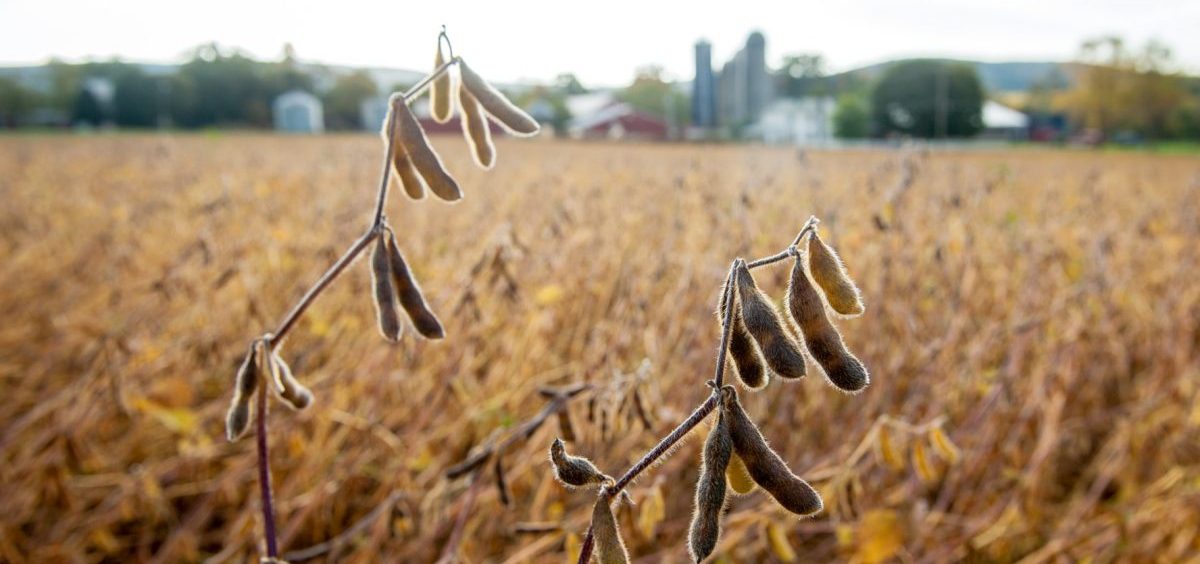News

The Soybean Is King, Yet Remains Invisible
By: Dan Charles | NPR
Posted on:
For more than a century, corn has been the most widely planted crop in the country and a symbol of small-town America. Think of the musical Oklahoma, where the corn is as tall as an elephant’s eye, or the film Field of Dreams, in which old-time baseball players silently emerge from a field of corn.
Even farmers are partial to corn, says Brent Gloy, who grows some himself, on a farm in Nebraska. (He also graduated from the University of Nebraska. You know, the Cornhuskers.)
“I do think there’s some truth to this idea that we’re probably predisposed to corn,” Gloy says. “But the current prices will make you lose those predispositions pretty quickly.”
In fact, those prices have now led to the end of King Corn’s reign. According to statistics released this week by the U.S. Department of Agriculture, corn is being pushed aside by a crop that’s largely unfamiliar to people outside the farming community – soybeans.
The numbers show that for the first time in history, American farmers harvested more acres of soybeans this year than any other crop – 83 million acres. (Farmers planted more acres of corn than soybeans, but more soybeans survived to harvest time.) The USDA predicts, based on current market conditions, that amount of land covered with soybeans will continue to increase, reaching 91 million acres next year, and 92 million acres in 2021.
Gloy has been monitoring these trends because he’s also an agricultural economist, and a visiting professor at Purdue University. Farmers are switching to soybean, he says, because it’s more profitable.
Prices are high because of “a lot of demand coming out of Southeast Asia.” China buys more U.S. soybeans than any other country, by far, and uses them to feed pigs and chickens.
Yet soybeans still don’t get the kind of honor and respect that corn does. There’s certainly no college football team called the Soybean Threshers.
Ines Prodöhl, a historian at the University of Munich, in Germany, has been thinking about the reasons why.
She’s writing a history of soybeans, and she ran into what she calls our “societal indifference” toward this crop when she came to the United States, years ago, and started searching for pictures in an online database called American Memory at the Library of Congress. “I was looking for images like farmers being proud of their soybeans, or anything like that,” she says.
She could only find fifteen or twenty soybean images; for other crops, there were thousands. “There was a ton of images about cotton, or corn, or wheat, and there was almost nothing about soybeans!” she says.
It probably doesn’t help that soybean plants are pretty unimpressive to look at, compared to those tall stalks of corn with tassels on top. They’re modest bushes that grow hip-high. Their leaves conceal pods full of little beans that, when mature, are tan and hard as marbles.
But Prodöhl says there are important historical reasons for the soybean’s lack of a public profile. Soybeans were brought to the U.S. from China relatively recently, in the 1920s, by scientists who promoted them not as food, but as alternate crop that would replenish soil that had been depleted from many years of growing corn or wheat.
“They never talked about soybeans as a foodstuff. Never, ever. It just didn’t happen,” says Prodöhl.
Today, soybeans are an important food, but they’re still quite literally invisible to most Americans. From the fields, they flow into giant factories that crush them into oil and meal. They end up in processed food, or industrial products, but their largest use is as animal feed.
This is how most Americans experience the country’s new #1 crop. They meet it in the form of a pork chop, or as that other American cultural icon, the chicken McNugget.
9(MDI4ODU1ODA1MDE0ODA3MTMyMDY2MTJiNQ000))

